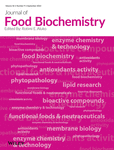Kaempferol inhibits the growth of Helicobacter pylori in a manner distinct from antibiotics
Abstract
Helicobacter pylori is associated with gastric disorders. In this study, the anti-H. pylori capacity of natural products from “Winter Red” crabapple flowers were evaluated, including flavonoids, organic acids, terpenoids, and phenolic acids. Among these products, kaempferol showed the highest antibacterial capacity. Structure–activity relationship assays indicated that all hydroxyls contributed to the antibacterial capacity of kaempferol, with the most important being hydroxyls in the A-ring. Kaempferol had comparable anti-H. pylori capacities to clarithromycin and amoxicillin. Both kaempferol and the two antibiotics might damage the cell membrane of H. pylori. However, the RNA-sequence assay demonstrated that their antibacterial mechanisms were different. The ATP-binding cassette transporters, flagellar assembly, and fatty acid metabolism were the major pathways in H. pylori cells responding to kaempferol treatment. We suggest that crabapple containing abundant kaempferol may benefit humans by inhibiting gastric H. pylori.
Practical applications
The anti-Helicobacter pylori capacity of natural products including flavonoids, organic acids, terpenoids, and phenolic acids from “Winter Red” crabapple flowers were evaluated in the present study. Among these products, kaempferol showed the highest antibacterial capacity. More importantly, kaempferol had comparable anti-H. pylori capacities to clarithromycin and amoxicillin, but in a manner distinct from the antibiotics. We suggest that crabapple flowers containing abundant kaempferol may be processed into various products for the patients who have gastric disorders caused by H. pylori. Or the extracted kaempferol from crabapples or other plants could be tested for the clinical treatment of gastric H. pylori.
CONFLICT OF INTEREST
The authors have no conflict of interest to declare.
Open Research
DATA AVAILABILITY STATEMENT
The data that support the findings of this study are available on request from the corresponding author.




